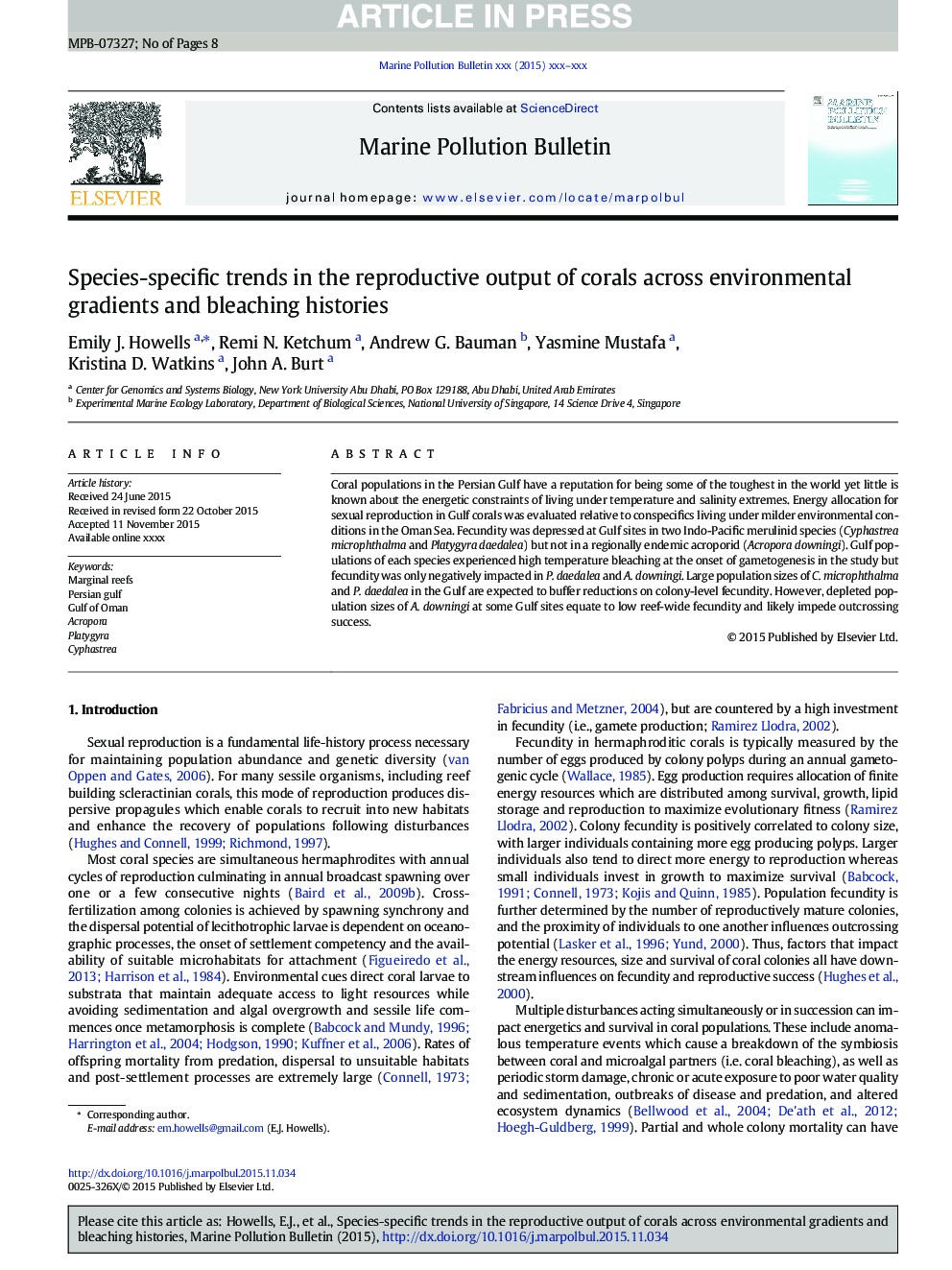| Article ID | Journal | Published Year | Pages | File Type |
|---|---|---|---|---|
| 6356018 | Marine Pollution Bulletin | 2016 | 8 Pages |
Abstract
Coral populations in the Persian Gulf have a reputation for being some of the toughest in the world yet little is known about the energetic constraints of living under temperature and salinity extremes. Energy allocation for sexual reproduction in Gulf corals was evaluated relative to conspecifics living under milder environmental conditions in the Oman Sea. Fecundity was depressed at Gulf sites in two Indo-Pacific merulinid species (Cyphastrea microphthalma and Platygyra daedalea) but not in a regionally endemic acroporid (Acropora downingi). Gulf populations of each species experienced high temperature bleaching at the onset of gametogenesis in the study but fecundity was only negatively impacted in P. daedalea and A. downingi. Large population sizes of C. microphthalma and P. daedalea in the Gulf are expected to buffer reductions on colony-level fecundity. However, depleted population sizes of A. downingi at some Gulf sites equate to low reef-wide fecundity and likely impede outcrossing success.
Keywords
Related Topics
Physical Sciences and Engineering
Earth and Planetary Sciences
Oceanography
Authors
Emily J. Howells, Remi N. Ketchum, Andrew G. Bauman, Yasmine Mustafa, Kristina D. Watkins, John A. Burt,
